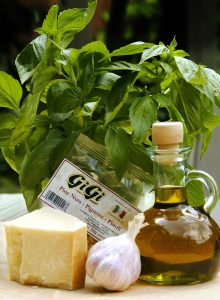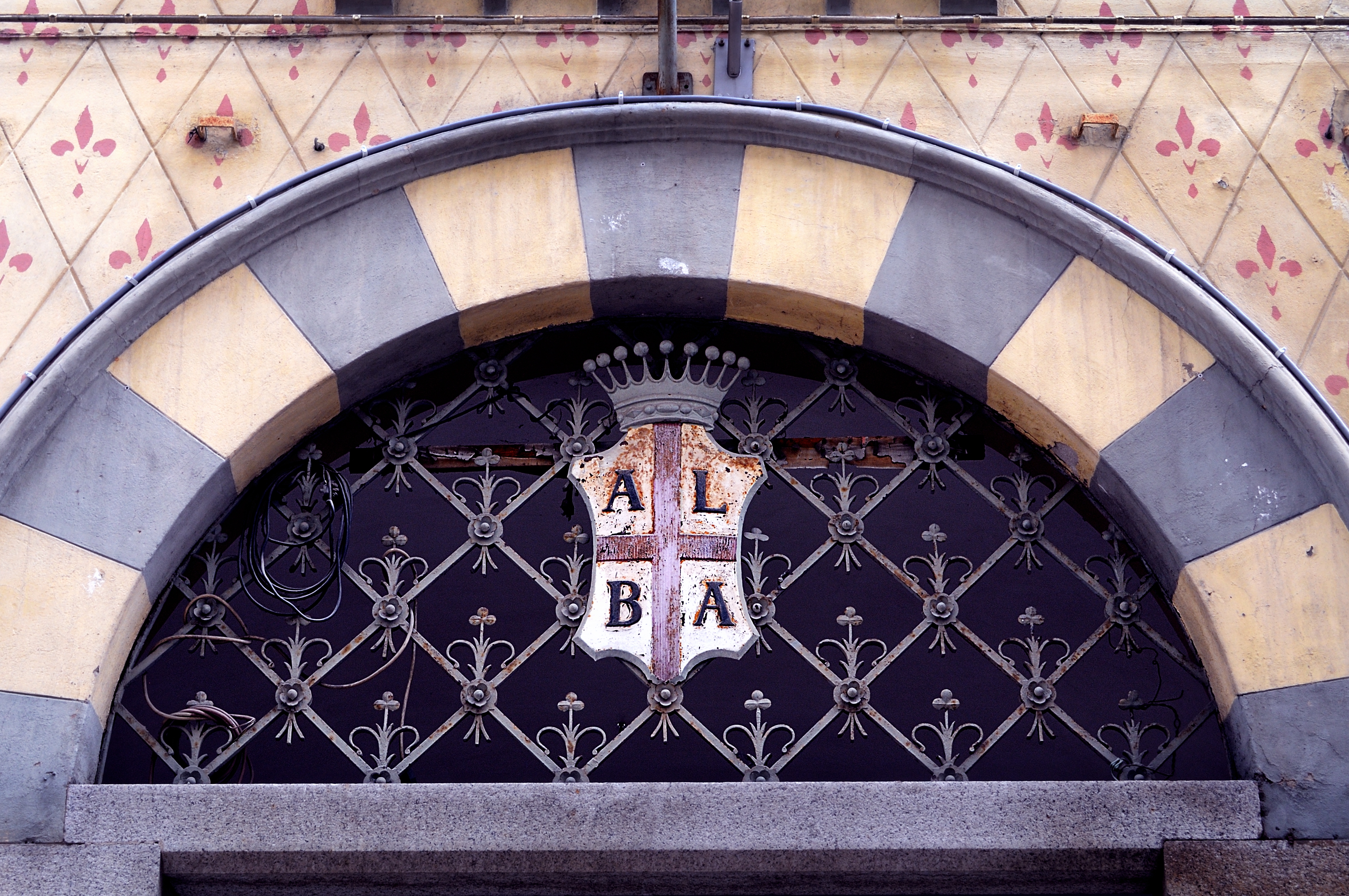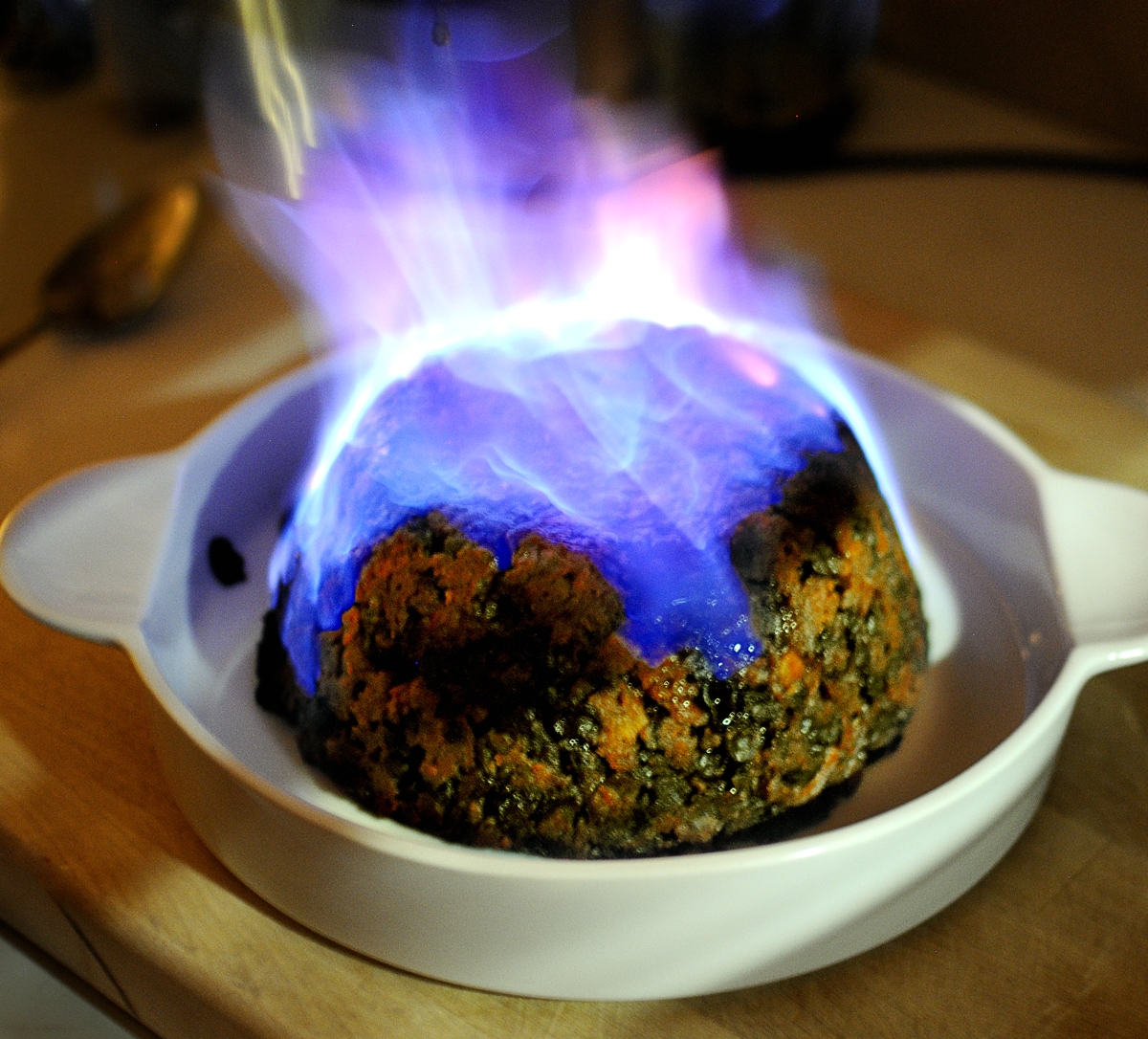It seems to be everywhere…and not just the molto famoso “Ligurian” pasta with potato and green beans with trofie pasta but dribbled or drizzled on anything you can imagine. But is that really “pesto?” Or, has the term “pesto,” which derives from the Italian pestare, meaning to pound or grind using a mortar and pestle, come to mean any kind of uncooked sauce? Kind of reminds me of our use of Kleenex when what we really mean are tissues. Perhaps this statement found in “Essentials” by Marcella Hazan says it all, “pesto may have become more popular than is good for it!”
Food Historian Gillian Riley refers to pesto as “simply being a mass of aromatic HERBS being pounded in a pestle and mortar with salt, garlic, olive oil, cheese and perhaps nuts which then can be diluted with vinegar or verjuice or broth and used as a sauce or relish with all kinds of things.” And it seems that in the past pesto was not unique to Liguria.
Who knew? My introduction to pesto was way back in the late ‘70’s when a friend made a batch, tossing it with fresh pasta she had picked up at a shop that made quality fresh pasta. Sad to say it didn’t last more than a couple of years. Sad for our city, that’s for sure! We could do with a place like that now! Anyway, back to my first pesto…it was absolutely the most wonderful thing I had tasted in a very long time…it was love at first bite. Hence the abundance of basil plants in our garden, in pots and where ever I can find a sunny spot! You can never have enough basil, right?
 Then a few years ago I made a new pesto discovery with fresh cherry tomatoes, basil and almonds that’s a specialty of Trapani in Sicily and so good I always want to lick the plate! Guess what? There are more cherry tomato plants that ever in our garden these days! Click here for a link to the recipe.
Then a few years ago I made a new pesto discovery with fresh cherry tomatoes, basil and almonds that’s a specialty of Trapani in Sicily and so good I always want to lick the plate! Guess what? There are more cherry tomato plants that ever in our garden these days! Click here for a link to the recipe.
As of late I’ve been having discussions with other cooks in my FB circle about calling it Spaghetti Carbonara when what makes up a Carbonara is changed up by adding or taking away key ingredients. For instance, in Rome I enjoyed a Tonnarelli Cacio e Pepe (one of my all-time favourites) that included zucchini blossoms…oh for shame! Does it still qualify as Cacio e Pepe? Or take Bolognese sauce…what if it doesn’t include the traditional 3 meats, the milk or for that matter is meatless and uses lentils instead?
Or in my “research” on pesto I found things like green pea pesto, a tagliatelle with corn pesto or god help me, collard greens and kale. Do they qualify as pesto? I have my doubts!
Mea culpa, for my spaghetti with a so called pesto made with green onions or ramps, or a parsley, almond version…at least the parsley one does include a herb! Should I change up the name of the other one? Maybe I should call it green onion or ramp “relish” or a “condimento” instead…
And what about that uninspiring “sort of green stuff” in a jar labelled as pesto? Please, can you tell me why anyone would pay good money when, if you own a food processor, (I know, can we call it a true pesto if a mortar and pestle is not involved), is dead-easy to make? And all that’s required is a bunch of fresh basil, pine-nuts, Pecorino or Parmigiano, your best extra virgin olive oil, salt and pepper. It would make a Ligurian Nonna proud (what do you bet she even uses a processor these days)…
And then I must add a word about the nuts…Gillian Riley says they don’t have to be there but they do thicken the sauce a bit, it would depend on what you are using the sauce for is my guess. Back to the nuts, the ideal would be Italian pine-nuts which cost an arm and a leg here. A small packet that contains perhaps 3 tablespoons, is close to $5.00. Failing the procurement of precious pine-nuts, I’ve been known to substitute slivered almonds, walnuts, hazelnuts and for another fantastic version of pesto, pistachios. Not cheap either, especially if you’ve been fortunate enough to get your hands on Bronte ones from Sicily, picked up, perhaps, on your last trip to Italy. The Californian ones we easily come by are not inexpensive either but they do make a nice treat!








YUM! Your post is of particular interest to me since I will be in Genoa, Liguria, in September and visiting the King of Pesto as well as making pesto with mortar and pestle. No surprise that variations on the theme find themselves in other regions so I’ll be interested to see what makes theirs unique.
Will definitely share about that–after lots of taste testing, of course!
“Knowing” your culinary expertise, I’m sure yours is divine!
V.
Thanks…sounds like a fun time. A book I want to get is “Recipes from Paradise” by Fred Plotkin…he loved Liguria! The King of Pesto was mentioned in Gareth’s post (I linked to it)…at the time of writing his pesto was being made and sent over to London to be sold in various Marks & Spenser’s…wonder if that’s still happening? One thing I had forgotten, is the basil used in Liguria has a much smaller leaf and a different taste from what we are used to and they use Pecorino, I think from Sardegna! You are going to have fun…better start lifting those weights to get in shape for the battle with the mortar and pestle! BTW: If you want to, you should try making the Sicilian Tomato pesto I talked about…it’s divine and dead-easy to make…all you need is a blender…with the weather you are having, an uncooked pasta sauce would be just the thing!
Ha! I’m quite open to non-basil based pestos, but pesto in a jar really is a travesty. And as you say, why bother if the real stuff is so very easy to make in a food processor?
And by the way, Happy Canada Day!
Thank you for your Canada Day wishes! Well, Frank, I probably will never try one with either kale and/or collards…for me those two need low and slow…although I have had a kale “Caesar” that was pretty good. And then Caesar salad has me wondering why I see it on menus in Italy…suppose it’s all in a name!